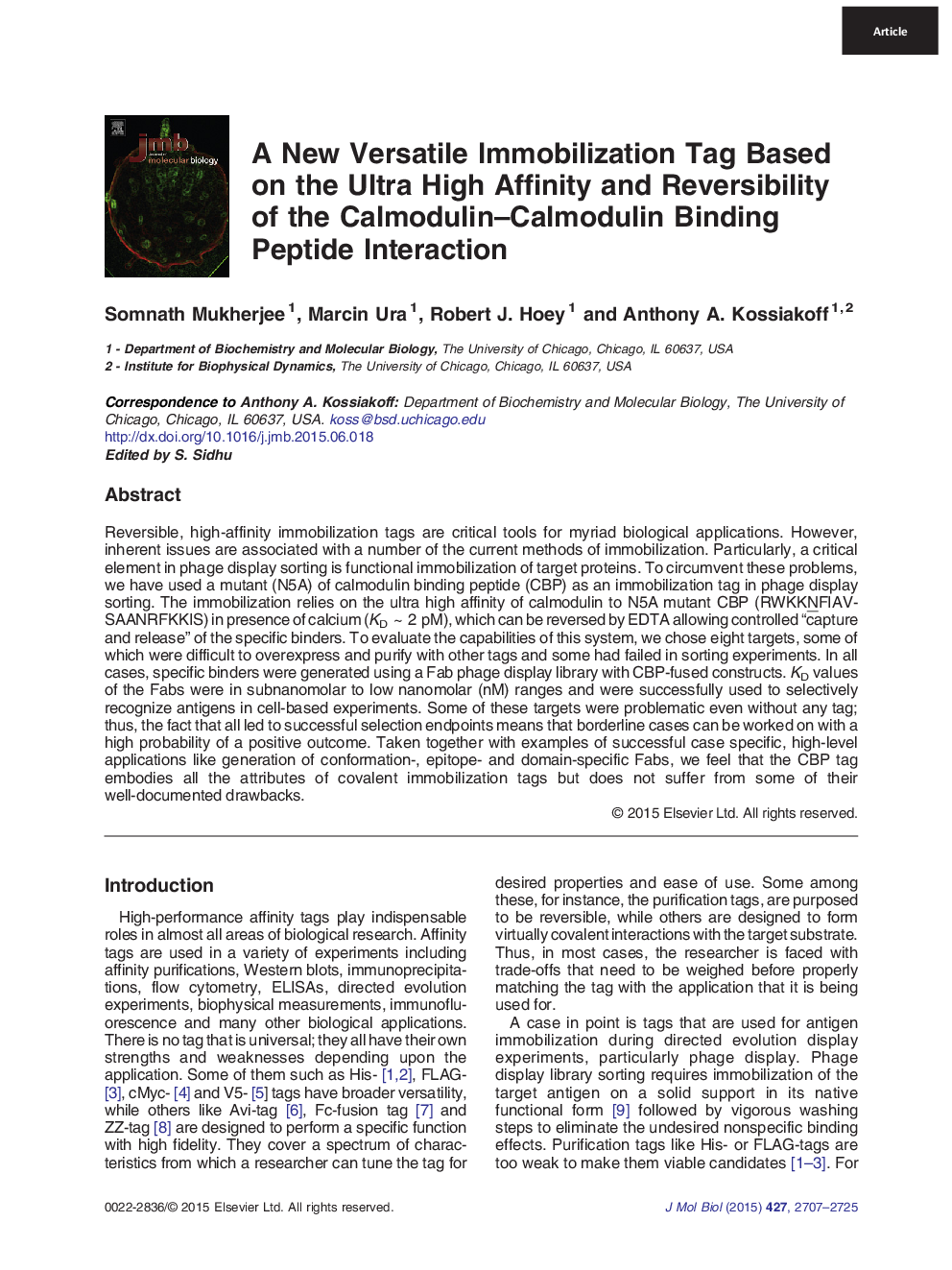| کد مقاله | کد نشریه | سال انتشار | مقاله انگلیسی | نسخه تمام متن |
|---|---|---|---|---|
| 2184294 | 1095822 | 2015 | 19 صفحه PDF | دانلود رایگان |

• Reversible, high-affinity immobilization tags have myriad research applications.
• N5A mutant of CBP tag offers controlled “capture and release” of specific binders.
• CBP improves solubility over Avi-tagged constructs.
• High-affinity domain-, epitope- and conformation-specific Fabs for challenging targets.
• Significant improvement over current techniques to obtain affinity reagents.
Reversible, high-affinity immobilization tags are critical tools for myriad biological applications. However, inherent issues are associated with a number of the current methods of immobilization. Particularly, a critical element in phage display sorting is functional immobilization of target proteins. To circumvent these problems, we have used a mutant (N5A) of calmodulin binding peptide (CBP) as an immobilization tag in phage display sorting. The immobilization relies on the ultra high affinity of calmodulin to N5A mutant CBP (RWKKNFIAVSAANRFKKIS) in presence of calcium (KD ~ 2 pM), which can be reversed by EDTA allowing controlled “capture and release” of the specific binders. To evaluate the capabilities of this system, we chose eight targets, some of which were difficult to overexpress and purify with other tags and some had failed in sorting experiments. In all cases, specific binders were generated using a Fab phage display library with CBP-fused constructs. KD values of the Fabs were in subnanomolar to low nanomolar (nM) ranges and were successfully used to selectively recognize antigens in cell-based experiments. Some of these targets were problematic even without any tag; thus, the fact that all led to successful selection endpoints means that borderline cases can be worked on with a high probability of a positive outcome. Taken together with examples of successful case specific, high-level applications like generation of conformation-, epitope- and domain-specific Fabs, we feel that the CBP tag embodies all the attributes of covalent immobilization tags but does not suffer from some of their well-documented drawbacks.
Graphical AbstractFigure optionsDownload high-quality image (261 K)Download as PowerPoint slide
Journal: Journal of Molecular Biology - Volume 427, Issue 16, 14 August 2015, Pages 2707–2725